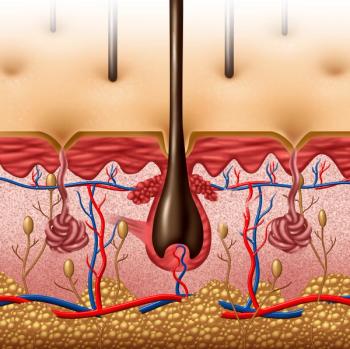
Existing research has focused on skin symptoms, but a new study looks for alterations in the blood associated with moderate-to-severe atopic dermatitis.


Existing research has focused on skin symptoms, but a new study looks for alterations in the blood associated with moderate-to-severe atopic dermatitis.

A new report shows work-related quality of life in general—and also in terms of physical and mental/emotional health—improved when patients began treatment for atopic dermatitis.

Now that racial and ethnic disparities of atopic dermatitis prevalence among children have been confirmed, the next step in research will be to discover the reasons why those disparities exist, said Jonathan Silverberg, MD, PhD, MPH.

Children with severe atopic dermatitis, in particular, were less likely than a control group to complete education at all levels, from basic compulsory education to postgraduate education.

In order to properly help patients manage their disease, it is critical for clinicians to recognize the differences in prevalence, severity, and persistency of atopic dermatitis among different demographics, said Jonathan Silverberg, MD, PhD, MPH.

Asthma exacerbations among Black/African American and Hispanic/Latinx adults with moderate-to-severe asthma decreased by approximately 40% during the COVID-19 pandemic, particularly among individuals who worked outside the home and those without type 2 inflammation.

Dupilumab is effective for atopic dermatitis, asthma, and chronic rhinosinusitis with nasal polyps, but a recent presentation noted the payer challenge in placing the biologic in an optimal tier.

As the population continues to diversify, the United States may be headed for increases in atopic dermatitis disease burden among children, said Jonathan Silverberg, MD, PhD, MPH.

As atopic dermatitis (AD) prevalence has increased in children over several decades, it's critical for physicians to recognize the environmental and demographic factors contributing to the change, said Jonathan Silverberg, MD, PhD, MPH.

The study findings show that atopic dermatitis is associated with internalizing and externalizing problems, with younger children experiencing emotional problems and adolescents with other atopic diseases having relationship problems.

Data from a recent cross-sectional study show severity of atopic dermatitis (AD) is associated with prevalence of learning disorders among children.

According to the researchers, the study is the first to describe a relationship between these factors and the development of atopic dermatitis (AD) in infants using multiomics.

Exposure to indoor formaldehyde can exacerbate atopic dermatitis (AD) symptoms in children with moderate to severe disease, especially in spring and summer and even at allowable levels.

Machine learning models can help predict which children diagnosed with childhood asthma before age 5 will continue to experience symptoms as they get older.

Deep learning algorithms to diagnose skin disease like atopic dermatitis could save time for providers while increasing accuracy, according to a pilot study.

Recent findings indicate that the symptoms of atopic dermatitis, hives, and rhinitis can all be linked to specific microbiota, implying that the gut-skin axis and gut-nose axis do exist.

The case illustrates how these 2 different conditions may share a related mechanism of action.

Although 90% of patients with severe asthma choose to continue using a biologic, patients with worse disease control at baseline or with lower socioeconomic status (SES) may be more likely to cease biologic use, according to a poster presented at the American Academy of Allergy, Asthma & Immunology 2021 Annual Meeting.

Use of a specialty pharmacy to take over the management of prior authorization (PA) requests for a dermatology practice significantly reduced the time to a decision and also decreased the time it took to fill the medication.

Treatment of asthma with biologics was lower for those on public health insurance compared with those who had private insurance, with Blacks underrepresented relative to Whites in publicly insured visits where biologic treatment is used.

Significant differences in health characteristics may provide insight into why females are far more likely to suffer asthma than males

Temperature and transepidermal water loss can serve as objective measures to help determine severity of cases of atopic dermatitis (AD) psoriasis and identify which patients need intensive treatment, according to a new study.

A recent review explores the use of biologics in atopic and inflammatory conditions as well as lingering research gaps.

Mepolizumab and benralizumab are both potent targets of the interlukin-5 pathway with the ability to significantly reduce eosinophil counts, according to new research published in Allergy, Asthma & Clinical Immunology.

A review explored the potential role of eosinophils and their mediators in the pathophysiology of chronic rhinosinusitis (CRS) subtypes.

259 Prospect Plains Rd, Bldg H
Cranbury, NJ 08512
© 2025 MJH Life Sciences®
All rights reserved.
